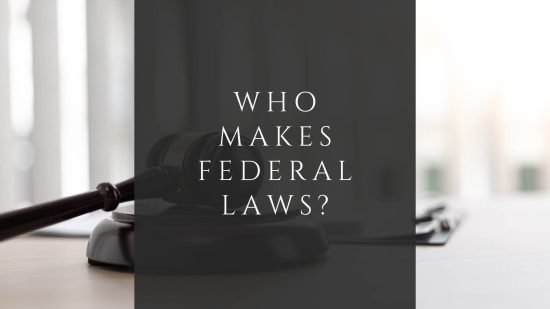Table of Contents
ToggleSources
- https://www.uscis.gov/citizenship/learners/study-test/study-materials-for-the-civics-test
This is the official USCIS website providing study materials for the civics test, including the 100 questions and answers. It directly supports the information about the citizenship test questions and answers. - https://www.usa.gov/how-laws-are-made
This is the official U.S. government website explaining the federal lawmaking process. It provides authoritative information on how Congress makes laws, supporting the detailed explanation in the blog post. - https://www.senate.gov/reference/reference_index_subjects/Laws_and_Regulations_vrd.htm
This is the official U.S. Senate website, providing detailed information on the legislative process. It supports the explanation of how bills are introduced, debated, and passed in Congress. - https://www.house.gov/the-house-explained/the-legislative-process
This is the official U.S. House of Representatives website, detailing the legislative process from bill introduction to presidential action. It corroborates the steps outlined in the blog post. - https://www.archives.gov/founding-docs/constitution-transcript
This is the National Archives' official transcript of the U.S. Constitution. It provides the exact text of Article I, Section 1, which is quoted in the blog post to explain the legislative powers of Congress.
Key Points
- The US Congress makes federal laws, consisting of the Senate and House of Representatives.
- The legislative branch is responsible for making laws, while the judicial interprets and the executive enforces them.
- Article I, Section 1 of the US Constitution vests legislative powers in Congress.
- Congress has 100 senators and 435 voting representatives; bills pass with a simple majority in each chamber.
- The vice president acts as a tiebreaker in the Senate if needed.
- Bills can be introduced by any member of Congress and go through initial, second, and third readings.
- Committees review bills, hold public hearings if necessary, and may amend them before voting.
- If a bill passes both chambers, a conference committee resolves any differences between versions.
- The president can sign the bill into law or veto it; Congress can override a veto with a two-thirds vote in both chambers.
- Once signed, the bill is published and distributed for implementation by government agencies.
Summary
The blog post explains that federal laws in the U.S. are made by Congress, which consists of the Senate and House of Representatives. It outlines the legislative process, from drafting a bill to committee reviews, chamber votes, and presidential approval or veto. Key takeaways include the roles of each branch in lawmaking and the steps required for a bill to become law.
To pass the US citizenship test, you will have to answer 10 of a possible 100 questions. The following question is from the USCIS test.
Who makes federal laws?
Acceptable Answers:
- Congress
- Senate and House (of Representatives)
- (U.S. or national) legislature
The following is a full explanation of the USCIS question:
The United States Congress Makes Federal Laws
The United States is composed of three branches of government. While the judicial branch interprets federal law and the executive branch enforces the law, it is the legislative branch that is responsible for making federal laws.
The legislative branch also referred to as the United States Congress is composed of the House of Representatives and the United States Senate. Members of both Congress and the Senate can present proposals for new laws in the form of a bill.
Article I, Section 1 of the United States Constitution provides that:
“All legislative Powers herein granted shall be vested in a Congress of the United States, which shall consist of a Senate and House of Representatives.”
The United States Congress is composed of 100 senators and 435 voting representatives. In the lower chamber, also known as the House, a bill can pass with a simple majority (218 out of the 435 representatives). In the upper chamber, also referred to as the Senate, a bill can pass with a simple majority consisting of 51 out of the 100 senators.
Because there is an even number of representatives in the Senate, the vice president of the United States acts as a tiebreaker when the need arises to determine whether a federal law will pass and the legislative power of Congress be exercised.
Preparation of a Bill
Both senators and members of the House of Representatives may introduce bills, which are proposals for new federal statutes. The representative may choose to present their own draft proposal or may reach out to the drafting division to prepare the proposal for them.
Initial Reading
The draft proposal is then filed with the Secretary General’s office for its initial reading. Three days after the bill has been filed, the Secretary General will read the title and subsequent bill number to the full chamber before assigning it to a specialized committee.
Committee Assignment
Most of the members of Congress are also members of various committees. Committees are specialized groups consisting of appointed members of Congress who focus on specific issues such as energy, defense, and justice. The committee will need to determine whether public hearings are necessary or not.
If the committee determines that no public hearings are necessary, it will schedule the bill for discussion amongst the committee members. During this period of time, the members may discuss and or debate various provisions of the bill. After debate, the committee members may amend the bill and vote on whether or not to send it to the full chamber.
If the committee determines that public hearings are appropriate, it will schedule a date and time for those hearings. The members of the committee will then reach out to experts in their field to discuss and debate the merits of the proposed bill. After these public hearings, the committee may vote on whether to send the bill to the full chamber as is or make amendments to it.
Second Reading
Once the committee has voted in favor of a bill, it is sent back to the Secretary General’s office for a second reading. While the initial reading of the bill only included the title and bill number, the full text of the proposed bill is read to the chamber during the second reading. After the second reading of the bill, the chamber may debate and offer amendments that may be voted on by the present members. After the second reading, the bill is updated with any amendments and prepared for the final reading.
Third Reading
The final copy of the bill with all amendments is then prepared and presented to each member of Congress. A period of three days is provided to the members to read it before a final vote takes place on the chamber floor. During the third reading, the Secretary General only reads the title and bill number to the assembly before the vote takes place.
Transmittal to the Senate
If the bill passes with a simple majority, it is endorsed and transmitted to the upper chamber. Like the House of Representatives, the Senate will go through a similar process with an initial reading and assignment to a committee. Once in committee, the bill will be discussed and/or debated before being presented to the full chamber for a final vote.
Conference Committee
Once a proposed bill has successfully passed in both the upper and lower chambers of the United States Congress, a conference committee will be constituted. If the Senate makes amendments to the bill throughout this process, the committee, which consists of members from both the upper and lower chambers, will discuss any of these differences. Like all committees, a report will be generated and signed by all members of the committee for a final vote on the chamber floor.
Transmittal to the President
The finalized bill is signed by both the Speaker of the House and the Senate President and the Secretary General and the Secretary of the Senate. From there, the bill is sent to the Office of the President for signing.
The President of the United States may choose to approve the bill, in which case it is assigned a Republic Act number and is transmitted back to Congress. The president acting in his capacity as chief executive of the executive branch of the federal government may also choose to veto the bill. The president will include the reason for that veto and then transmit it back to Congress.
Final Actions
Suppose the president signs the bill into public law. In that case, copies received by the House are then transmitted to the Official Gazette Office, which is responsible for the publication and distribution to the agencies of government that handle regulation implementation.

Get Smarter on US News, History, and the Constitution
Join the thousands of fellow patriots who rely on our 5-minute newsletter to stay informed on the key events and trends that shaped our nation's past and continue to shape its present.
However, in the event that the president vetoes the bill, Congress will need to make a determination on whether to override the veto. Both the House of Representatives as well as the Senate are required to proceed independently of one another. To override a veto, a two-thirds vote is required from both chambers.
Who Makes Federal Laws? Quiz
Frequently Asked Questions
Who makes federal laws in the United States?
What are the acceptable answers for the USCIS question 'Who makes federal laws?'?
How does a bill become a law in the United States?
What role does the President play in the law-making process?
What happens if there is a tie in the Senate when voting on a bill?
How useful was this post?
Click on a star to rate it!
Average rating / 5. Vote count:
No votes so far! Be the first to rate this post.
We are sorry that this post was not useful for you!
Let us improve this post!
Tell us how we can improve this post?







